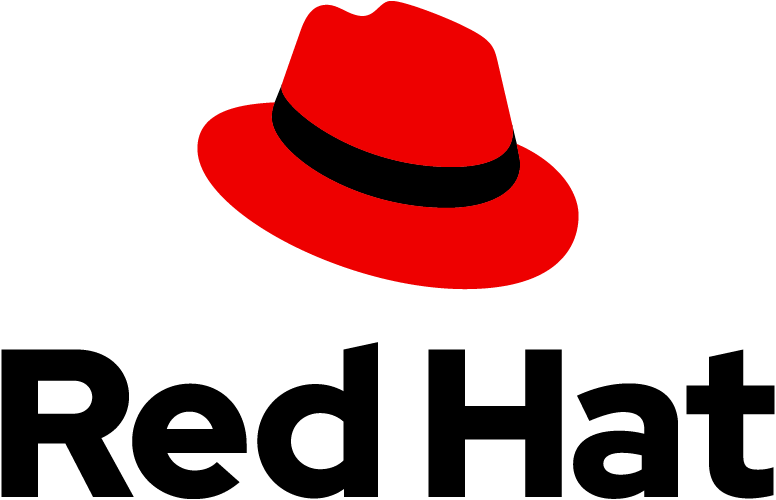
Overview
Built on the Red Hat Enterprise Linux operating system (OS), Red Hat Enterprise Linux for SAP expands existing capabilities so you can get the most out of SAP's powerful analytics and data management portfolio. Red Hat Enterprise Linux High Availability (HA) provides all the necessary packages for configuring pacemaker based cluster that provides reliability and availability for critical production services. Extended Update Support (E4S) provides support on specific minor releases for 4 years from General Availability. Red Hat Insights can now be deployed for users with existing, cloud marketplace-purchased Red Hat Enterprise Linux (RHEL) system managed by Red Hat Update Infrastructure (RHUI).
Highlights
- High Availability solutions for S/4HANA, SAP HANA, and SAP Business Applications and 4 years Extended Update Support (E4S) from General Availability
- SAP specific technical components to support S/4HANA, SAP HANA, and SAP Business A
- Red Hat Enterprise Linux for SAP with HA and Update Services' cost is 0.10 $/hour for a small Instance type (.06 in infrastructure costs and .04 in software cost). and 0.225 $/hour for a large instance type (.13 in infrastructure costs and 0.095 in software cost). For information about reserved instance pricing, refer to to this URL: https://aws.amazon.com/ec2/pricing/reserved-instances/pricing/
Details
Introducing multi-product solutions
You can now purchase comprehensive solutions tailored to use cases and industries.

Features and programs
Buyer guide

Financing for AWS Marketplace purchases

Pricing
- ...
Dimension | Cost/hour |
|---|---|
m7i.large Recommended | $0.016 |
t3.micro | $0.016 |
m6a.4xlarge | $0.087 |
c6in.4xlarge | $0.087 |
m5.metal | $0.00 |
c3.xlarge | $0.032 |
r6idn.32xlarge | $0.00 |
c6i.16xlarge | $0.00 |
c4.xlarge | $0.032 |
i3en.24xlarge | $0.00 |
Vendor refund policy
We do not currently support refunds, but you can cancel at any time.
How can we make this page better?

Legal
Vendor terms and conditions
Content disclaimer
Delivery details
64-bit (x86) Amazon Machine Image (AMI)
Amazon Machine Image (AMI)
An AMI is a virtual image that provides the information required to launch an instance. Amazon EC2 (Elastic Compute Cloud) instances are virtual servers on which you can run your applications and workloads, offering varying combinations of CPU, memory, storage, and networking resources. You can launch as many instances from as many different AMIs as you need.
Version release notes
Latest Updates
Additional details
Usage instructions
Access the application via a browser at http://<public_dns>/start.html:80. To connect to the operating system, use SSH and the username ec2-user. All application controls are available via the command line by typing "commands /help".
Resources
Support
Vendor support
Getting Started
AWS infrastructure support
AWS Support is a one-on-one, fast-response support channel that is staffed 24x7x365 with experienced and technical support engineers. The service helps customers of all sizes and technical abilities to successfully utilize the products and features provided by Amazon Web Services.



Standard contract
Customer reviews
RHEL: The Ultimate Enterprise OS
Using robust security and detailed documentation has improved our enterprise operations
What is our primary use case?
I use Red Hat Enterprise Linux (RHEL) , and we have a couple of customers using OpenShift, the Kubernetes platform based on Red Hat, and also Red Hat Virtualization. My first contact with the Linux platform was with Red Hat.
What is most valuable?
The best features of Red Hat Enterprise Linux (RHEL) are its stability and the RPM, Red Hat Package Manager, which is perfect. They also deliver Satellite, a platform for updates. It is a very robust, excellent platform.
For me, and for every Linux distribution, the most important security feature in Red Hat Enterprise Linux (RHEL) is SELinux. Security is often misunderstood by others. SELinux is very important because it provides security for the kernel. Many people disable SELinux, but it is the most important and most misunderstood feature. People do not understand it. The updates and SELinux are very important to me. SELinux is very good, but it is complex, and I have seen many administrators disable it because instead of helping them, it causes trouble. For example, securing my NGINX configuration is a pain. It is a very good security option, but I would say it is excellent only if one is an expert.
Red Hat Enterprise Linux (RHEL) documentation is very good and very complete. Regardless of my opinion about the IBM acquisition, the documentation is excellent.
What needs improvement?
IBM committed two major mistakes with Red Hat. The first was destroying the CentOS project, which was a fork of Red Hat. The second was limiting the use of free options and restricting hardware to support Red Hat on just some limited hardware. One can use the system for free, but the statement is not entirely true because it is limited to a couple of virtual processors and I do not remember if it was 24 or 16 GB of RAM. If one goes beyond that configuration, one has to pay, and IBM is IBM. Many companies were in trouble because from one day to the next, IBM said they would no longer support CentOS and told them to move to another distribution. People had to migrate, and for that reason, there are Rocky Linux , AlmaLinux , and other Linux distributions that are trying to rise and taking advantage of that situation. Red Hat Enterprise Linux (RHEL) is just for corporate companies with money to waste on licensing.
Red Hat Enterprise Linux (RHEL) is very expensive. In the case of our customers, the couple of customers with OpenShift, they have enough money to license Red Hat. They bundle Red Hat with virtualization and OpenShift packages. However, it is not suitable for an SMB company. It is not payable or affordable. For me, it is very expensive.
For how long have I used the solution?
I use Red Hat Enterprise Linux (RHEL) a lot, though I do not remember the exact frequency.
How are customer service and support?
I have worked with Red Hat support, and it is very good because they have very good engineers. In Latin America, during my time, the support in Spanish was mostly provided by engineers from Argentina. In Colombia, I have worked with a couple of engineers from Colombia, and they were very good. I have not worked with support in English for Red Hat, only in Spanish with those engineers.
How would you rate customer service and support?
Positive
What other advice do I have?
My first Red Hat Enterprise Linux (RHEL) certification, Red Hat Certified Engineer, was for version 6, which was approximately 12 to 15 years ago.
I have tried Red Hat Enterprise Linux (RHEL) Image Builder and System Roles, and it is pretty good.
I would rate the support at an eight out of ten. My overall rating for this product is ten out of ten.
Powerful Scripting and Automation Capabilities
Hybrid cloud platform has simplified internal banking apps while supporting regulated environments
What is our primary use case?
The main use cases for Red Hat Enterprise Linux (RHEL) at the bank involve internal applications, as we do a lot of internal applications not exposed to clients.
What is most valuable?
From my perspective, the best features of Red Hat Enterprise Linux (RHEL) lie in its ease of use, especially compared to AIX, which has a lot of functionalities requiring extensive learning. It was easy for me to shift from AIX to Red Hat Enterprise Linux (RHEL).
Red Hat Enterprise Linux (RHEL) helps manage our hybrid cloud environment, but being a bank, we are highly regulated internally, so there is limited direct involvement with the cloud environment in Royal Bank cloud, which is Azure .
What needs improvement?
One area I see for improvement in Red Hat Enterprise Linux (RHEL) is in the documentation. I encountered some scarcity when looking for information regarding structure, commands, and administrative tasks.
For how long have I used the solution?
I have dealt with Red Hat Enterprise Linux (RHEL) for around 10 years, even when it was not part of IBM.
What do I think about the scalability of the solution?
My opinion of Red Hat Enterprise Linux (RHEL)'s scalability is that it was very easy.
How are customer service and support?
I would rate Red Hat's customer service or technical support as a 10, as my experience with all IBM products, including Red Hat Enterprise Linux (RHEL), has been very satisfactory all the time.
How would you rate customer service and support?
Positive
How was the initial setup?
The initial setup of Red Hat Enterprise Linux (RHEL) is straightforward compared to AIX, which is more convoluted.
What other advice do I have?
I have experience with platforms like Linux, and I am also working deeply with MongoDB and Node.js, tools that I use constantly every single day.
I am familiar with Red Hat Enterprise Linux (RHEL), and here in RBC, we are a big IBM shop, currently using JBoss and Red Hat Enterprise Linux (RHEL) as part of our environment.
Red Hat Enterprise Linux (RHEL) is used for both cloud-based solutions and on-premises.
From a business value perspective, the business folks do not notice much difference between Red Hat Enterprise Linux (RHEL) and other distributions, as long as their application functions well, they are satisfied.
We utilize two cloud providers for Red Hat Enterprise Linux (RHEL) solutions, mainly Azure and also Amazon. I cannot answer how Red Hat Enterprise Linux (RHEL) was purchased, but I know we have it on both Amazon and Azure.
I would rate Red Hat Enterprise Linux (RHEL) a nine, as I find it satisfactory in various aspects.